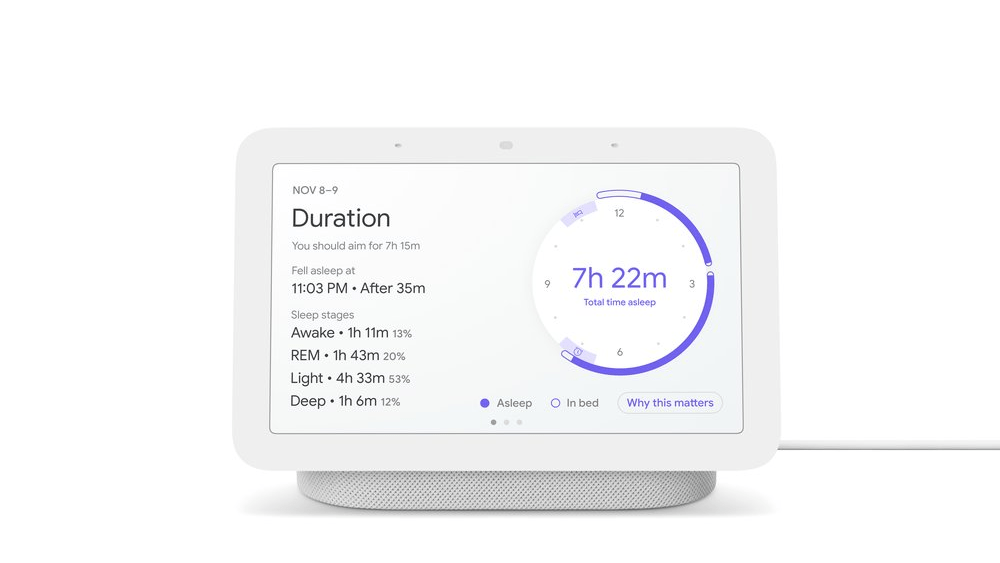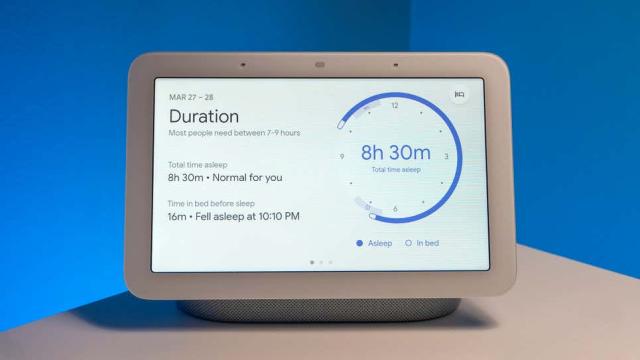Google’s newest Nest Hub tracks your sleep from your nightstand, and the company said when the display launched that its Sleep Sensing feature was a preview of subscription services to come. Well now we know more about what Nest Hub will be capable of — and how much it will cost.
We don’t all sleep with smartwatches on our wrists or sensors underneath our pillows, and Google’s second-generation Nest Hub smart display is a more passive (and therefore more convenient) way to track your sleep. The Nest Hub doesn’t use cameras — instead, it uses technology developed through Google’s Project Soli, which uses a small radar-based chip to track your sleep movement. It’s slightly less invasive than a wearable device and a little more accurate than placing your smartphone by your bedside.
Google is rolling out an update that improves the sleep algorithms in the Nest Hub. The update introduces a more detailed readout of your light, deep, REM, and awake periods in the morning after a night’s slumber, which is similar to what you’d see after wearing a Fitbit or Oura ring while you sleep.

According to a Google blog post, the Duration and Quality screens will tell you how long you were in each stage of sleep. If you share your sleeping space with other warm bodies — a cat, a dog, or a snoring partner — the Google Nest Hub will factor them into your stats. Any coughing or snoring that happens outside of your calibrated sleeping area will appear on a timeline marked “Other sounds.” It’ll also show other loud noises that you might have slept through.
Google is fully leaning in to the Nest Hub’s wellness aiding abilities. This update also includes access to Calm, a popular meditation app that offers chill-out playlists, guided meditations, and relaxation techniques. Calm will offer some of its services through Google’s smart displays. To try a meditation, instead of launching the app on your smartphone, you could command Google on the Nest Hub to “start a meditation.” If you’re a Calm Premium member (which costs A$79.99 a year), you’ll be able to dive into the entire meditation catalogue. But if you don’t, you’ll be able to access some free Calm content through the display.
Beginning in 2023, Google will integrate Sleep Sensing into Fitbit Premium, which currently costs about A$15/month or A$130/year. (Reminder: Google owns Fitbit.) However, the preview will extend into the following year so that Nest Hub users can utilise the Sleep Sensing features for free in 2022. The company is clearly hoping you’ll get hooked and want to pay up after a couple years of tracking.
